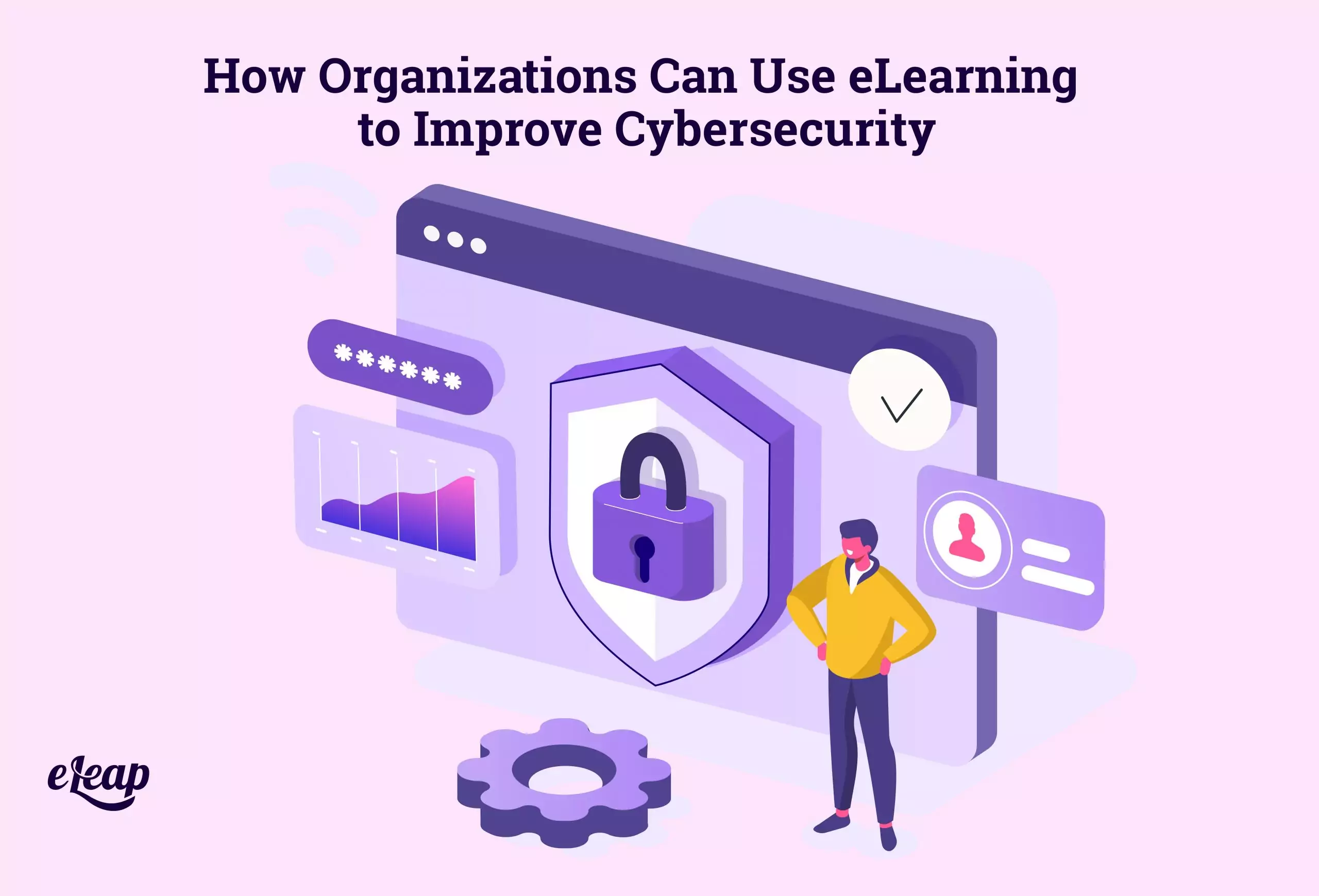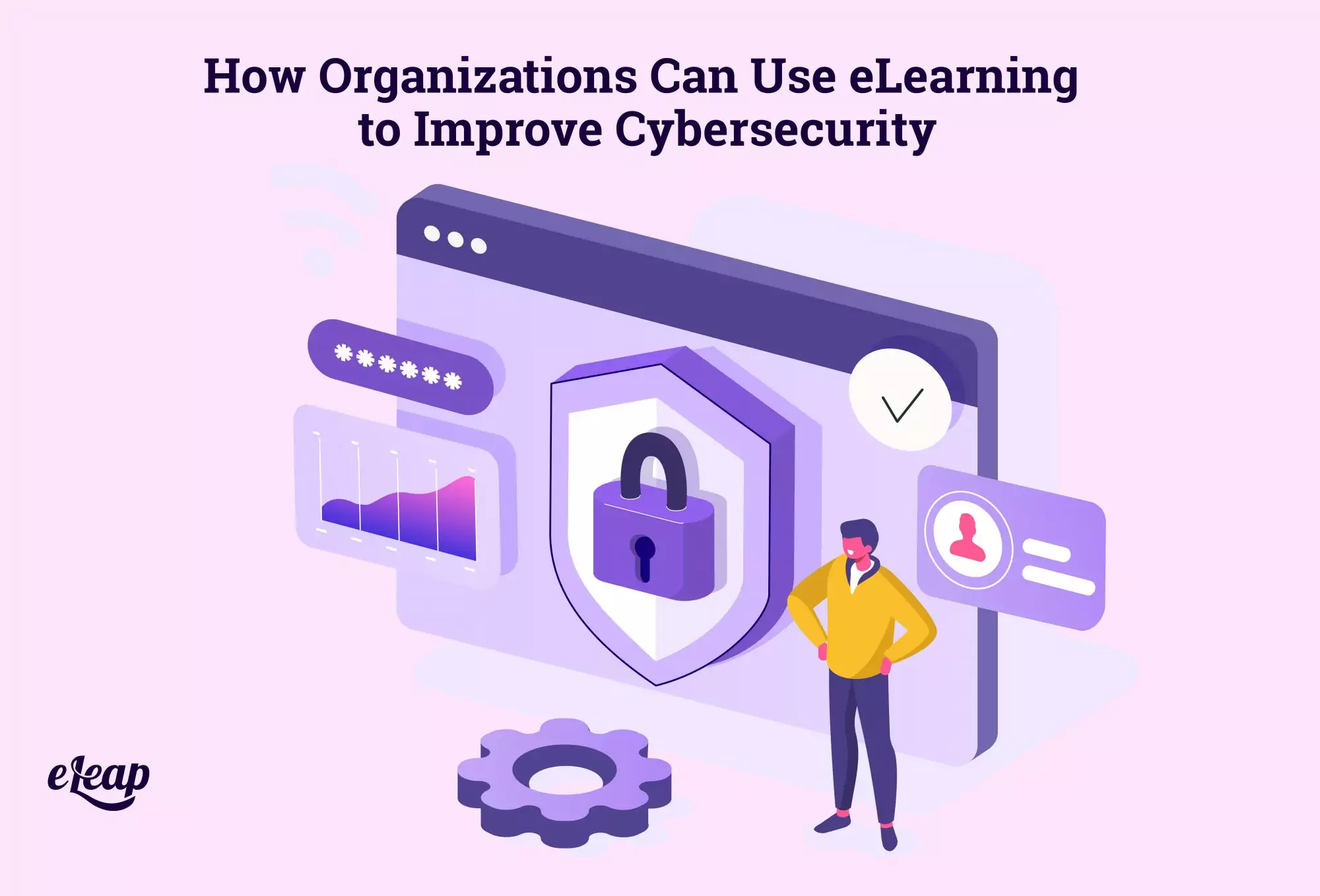How Organizations Can Use eLearning to Improve Cybersecurity

Organizations today face greater threats than ever before. Nowhere is that truer than in the increase of cybersecurity threats. Once, only large businesses needed to worry about attackers breaching their digital defenses, but, today, businesses of all sizes and in all industries are being targeted. We have all seen news stories about petroleum refineries, meat processing facilities and other ‘soft targets’ all falling to cybersecurity attacks. Most of these incidents could be traced to simple breaks in security. Fortunately or unfortunately these types of security issues could be resolved with well-design elearning cybersecurity training courses.
Not only are more businesses than ever before facing cybersecurity threats, but the nature of those threats continues to grow and change. In addition to human attackers, businesses must also contend with more nefarious threats, including malware, phishing attacks, and much more.
Given the incredible increase in threats, it is more important than ever before that all employees are aware of their role in preventing data breaches and attacks. The good news is that eLearning can be a powerful tool to drive awareness, teach best practices, and more. In this post, we will explore critical considerations and provide important tips for organizations in all industries to follow.

Mandatory Training
The first tip is the most important – your cybersecurity training should be mandatory for all employees. That includes your rank and file, but also the C-suite. More and more, attackers are targeting higher-level employees with disastrous (for the company) results. No level of employment is free from the risk of cybersecurity threats or that does not play a role in preventing data breaches.
Ensure You Cover All That’s Necessary
How many types of cyber threats can you think of off the top of your head? Chances are good you can name a few, but fall far short of the true number out there. This is an example of why it is so important that your eLearning covers all the threats necessary. No, that doesn’t mean that every single type of threat that exists should be included, but it does mean you need to include all those that could conceivably affect the business.
Password Hygiene Best Practices
The humble username and password are the most commonly used safeguards to digital credentials. However, they’re also the most frequently compromised. Most of the time, that’s because someone took a shortcut with their password in some way. Your eLearning must teach the basics of password hygiene, including:
- Changing passwords regularly
- Not using the same password more than once
- Not sharing passwords between accounts
Safe Internet Browsing Practices
Another common route to infiltrate organizations is through an employee’s web browser. Make sure that your cybersecurity eLearning includes a full module on Internet browsing safety practices, such as:
- Keeping browsers up to date
- Avoiding malicious sites
- Disabling autocomplete on forms
- Only visiting sites with URLs beginning with HTTPS
Cover Phishing
Of all the cybersecurity threats out there, one of the fastest-growing is phishing. This can occur through email, but it can also happen in other ways, including over the phone. In most cases, the perpetrator pretends to be someone in authority, someone the recipient knows, or both, such as a higher-up within the business. They request that the employee provide them with company information – bank accounts, system passwords, etc. – and then use that information to breach security. Your training must cover phishing, as well as whale phishing, which is a derivative of the practice that specifically targets C-suite execs (or whales).
BYOD Policies
Many organizations have policies that allow employees to bring their own digital devices to the office and connect to the network. This includes smartphones, tablets, and even personal laptops. This can allow attackers to compromise passwords and other information if employees are incautious with their device use. The same thing applies to remote work capabilities – accessing the office network from a remote location, possibly using a public connection, can be very risky.
Bake It Into Your Onboarding
It’s not enough that you provide cybersecurity training for your existing employees. It needs to be a core part of your onboarding process. This allows new employees to hit the ground running so to speak, and reduces both the learning curve involved here and the possible risk posed by new employees.
Onboarding is an excellent time to start building cybersecurity awareness, as it helps to instill a sense of ongoing responsibility for all. It is also a good time to touch on awareness in the employee’s personal life, their use of personal devices in the office, remote connections, and much more.
Simulations Drive Home the Lesson
You must include simulations within your cybersecurity eLearning material. Informational content helps lay the foundation, but actual practice is necessary to help employees really put that information to use and hone the skills they’ve learned. By making this part of your eLearning efforts, you make it possible for employees to practice in a safe environment where clicking the wrong link or replying to the wrong person does not compromise the company’s data.
Create realistic simulations that mimic true situations employees may find themselves in. Base those simulations on historic attacks that actually occurred, but tailored to your organization (and each employee if possible). You will find that these simulations drive powerful results because they put employees in high-pressure situations where tension is escalating and the potential results feel real, even if they are not.
Rinse and Repeat
Cybersecurity training is not something that can be done once and then forgotten about. Not only must you continue to train new hires, but there are many other things that consider that make repetition important, including:
- New, emerging threats
- Increased risk factors in the industry
- Regular refresher courses to keep the importance of cybersecurity front and center
Make cybersecurity training part of your regular eLearning efforts. It should be an ongoing process to help ensure that employees do not inadvertently lower their guard. Supplement your eLearning efforts with other aids, such as providing information to cybersecurity resources and guides, how-to information related to account protection, and more. With a concerted effort, the right eLearning content, and a commitment to ongoing training, you can reduce risk while improving resilience and strength.